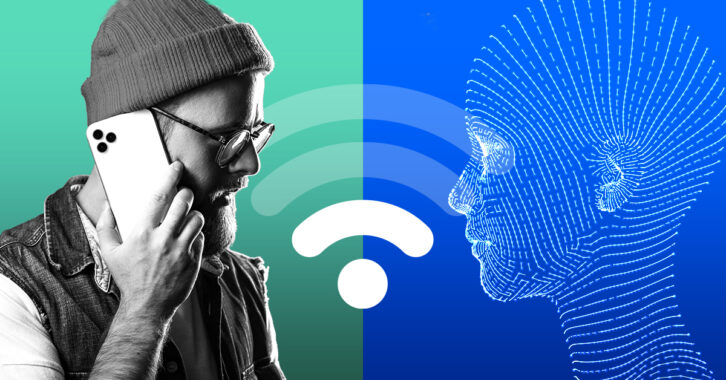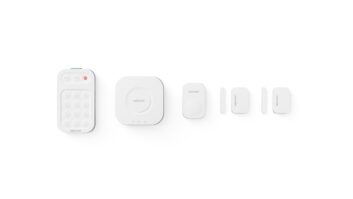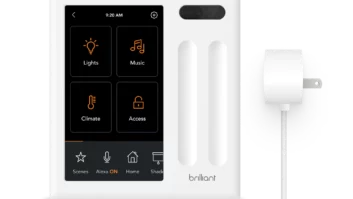
For smart home device manufacturers looking to grow their market share, prioritizing customer experience is king. However, today’s CE customers face an increasing number of connectivity challenges – from WiFi network congestion and interference to new interoperability standards like Matter 1.0 and multiple smart home automation platforms.
Increasing smart home network complexity can lead to a poor customer experience, rising returns, and brand reputation challenges. If left unaddressed, this trend could impact the future growth of the smart home market, which is currently projected to exceed USD $163 Billion by 2028.
So, what can device manufacturers do to prevent these issues from impacting their bottom line?
Finding Fault
When customers encounter difficulties connecting your smart home device to their home network, it is often not a fault of your product. Regardless, it can become your problem. Too often, the customer experience fails where the “smart” device meets the home WiFi network.
WiFi-related issues can be due to a number of factors, including interoperability conflicts with other smart home systems, intermittent internet connectivity, network congestion, and automated band steering.
When a smart home device fails to work as expected, many consumers believe the device is at fault. When this happens, smart home brands face the risk of unnecessary product returns, increased support costs, brand devaluation, and lost revenue.
In many cases, the connectivity issues are entirely unrelated to the smart home device functionality. Yet, it’s critical that WiFi issues are resolved before they escalate. By the time the customer calls, time is running out on your opportunity to ensure customer satisfaction and secure brand loyalty. In fact, roughly 50% of customers will jump to a competitor after a poor customer experience.
WiFi Woes

In general, two types of WiFi problems occur most frequently. First, the customer is initially unable to correctly set up the device, and second, device connectivity becomes chronically intermittent over the long term. These types of issues may be related to the device chipset, the WiFi operating frequency, network configuration, or even the customer’s home layout and building materials. Of course, all these factors can come into play when troubleshooting device and WiFi connection issues.
Although some WiFi-enabled consumer electronics products offer dual-band operation in both 2.4 GHz and 5 GHz frequencies, most smart home devices use the 2.4 GHz frequency band exclusively. A primary reason is that the 2.4 GHz frequency penetrates walls and furniture better than 5 GHz, meaning that 2.4 GHz generally offers longer range and better coverage. The 2.4 GHz frequency also has longer wavelengths, which allows them to bend around objects more easily, reducing WiFi dead spots in the home.
Moreover, 2.4 GHz chipsets and modules are more cost-effective than 5 GHz components. For many device manufacturers, this may be the more compelling reason they are still using 2.4 GHz. However, the legacy 2.4 GHz band also is used by many other home devices, from microwave ovens to all types of Bluetooth connections. As a result, devices operating in this band can often suffer connectivity challenges due to network congestion.
Compounding this is the fact that the 2.4 GHz spectrum spans 14 channels across 100 MHz, with 13 channels used in Europe, and only 11 channels available in the U.S. and Canada. With each channel measuring 20 MHz wide and just a 5 MHz separation between the center of each channel, the channels characteristically overlap to some degree. This creates signal interference, reducing the range, bandwidth and performance of the network.
Since channels 1, 6, and 11 do not overlap, most wireless routers will default to these channels to prevent interference. Yet, this further reduces the number of channels available to which devices can connect. In a large apartment building or condominium, residents will likely experience significant interference from their neighbors, due to the longer range of 2.4 GHz signal propagation.
Mind Over Matter

For wireless routers and mesh WiFi systems that use the 5 GHz WiFi band, an additional 21 non-overlapping channels become available. In an attempt to alleviate network congestion, many of the latest network routers and smart home controllers use artificial intelligence (AI) and machine learning (ML) to steer wireless devices to prioritize the 5 GHz band. This can be a problem for smart home devices that only use the 2.4 GHz band. And because automated band steering is not covered in the WiFi standard, each manufacturer has their own approach, which can further complicate troubleshooting.
Likewise, new industry standards like Matter also impact the connectivity of smart home devices by taking over the network commissioning process. Matter allows a controller — such as Apple HomePod, Amazon Alexa, Google Nest Hub, or Samsung SmartThings — to onboard and control new devices, as well as manage WiFi communication and automation collectively for the smart home ecosystem. This process isn’t always compatible with every device.
The inconvenient truth is that trying to prevent these connectivity issues from a hardware perspective is nearly impossible. However, understanding the variables that can disrupt the customer experience allows for proactive measures. These include customer education and robust troubleshooting support, which can help mitigate potential risks.
Intelligent Insight
 The home WiFi ecosystem can be a dynamic environment, where various types of smart home products can present unique challenges with varying levels of complexity.
The home WiFi ecosystem can be a dynamic environment, where various types of smart home products can present unique challenges with varying levels of complexity.
For example, portable and locomotive devices, such as smart vacuums or connected music players, may work well in some areas of the home but lose connectivity in others. Security cameras or streaming video devices require consistent, high-bandwidth connections for optimal performance. On the other hand, low-bandwidth devices like smart lightbulbs or ovens require less data; however, they can still have occasional problems if located too far from the wireless router.
Whether a customer is having issues connecting their device for the first time, or an existing device starts to lose connectivity intermittently, a full understanding of what is happening in the home network is key to resolving the problem. In most cases, neither the consumer nor the device manufacturer’s support agent has this level of visibility, leading to long resolution times, customer frustration, and unnecessary product returns.
WiFi troubleshooting and support software can provide the necessary end-to-end network visibility and tools to identify and resolve connectivity issues quickly and accurately. Implementing and maintaining such support software, from deployment through the entire device lifecycle, enables device manufacturers to empower their support teams with real-time connectivity insights, facilitating effective resolutions without requiring firmware or hardware updates.
Manufacturers can also provide a self-help app to customers that provides WiFi network diagnostics, guided troubleshooting, and resources to enable customers to solve most connectivity issues themselves before escalation. This self-help approach not only prevents the initial support call but also reduces the need for future WiFi-related calls by up to 50 percent, helping to minimize support costs.
Smart home brands thrive on delivering exceptional customer experiences. Having the right support tools in place before network connectivity issues arise sets the stage for an unparalleled support experience. This, in turn, leads to happier customers, fewer product returns, and increased revenue.
About the Author
Jason Moore is Co-Founder and CEO of RouteThis, a provider of vendor-agnostic software solutions and remote service platforms used by telcos, service providers and technology companies around the world. Prior to founding RouteThis, Jason was CEO of a leading video platform in the early smart home market and has over 10 years of experience across several facets of the industry, from silicon engineering to software development to SaaS sales.













